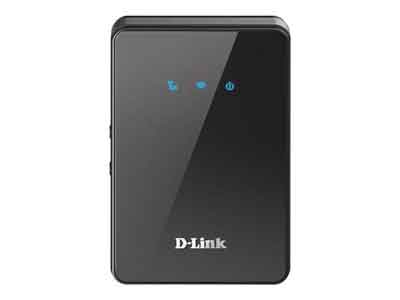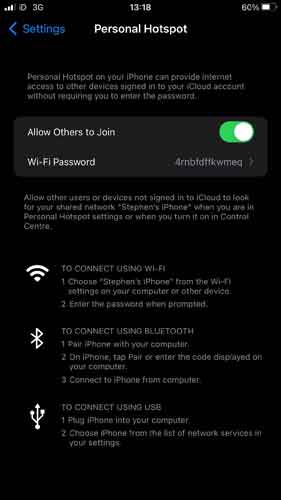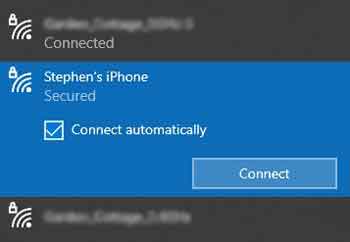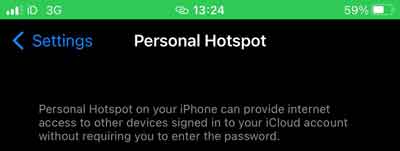Loading…
Mobile Hotspot And Tethering | All You Really Need To Know
Mobile Hotspot and Tethering services have been around for a while now, but the setup and how to use is easier now more than ever. This is important in today's connected world and instant demand culture.
The most common method of Internet connectivity is over Wi-Fi, with most mobile devices capable of wireless connectivity. However, we do not yet live in a world where Wi-Fi is available, wherever you are. This is where mobile hotspot and tethering technology comes in.
Have you ever been on public transport, and found a long list of wireless services available (password permitting) to your mobile phone or Laptop? This is likely due to other passengers setting up their smartphones for tethering purposes.
In this article, we delve deep into what mobile hotspot and tethering is and how it works. We then look at how to set up tethering, which is very straightforward, and highlight a few hints and tips to make the most of your experience.
Join The Human Byte — Get The Ultimate BIOS Update Guide
- Receive the ultimate BIOS update pack
- Includes a set of checklists and flowcharts to support your BIOS update process
- Also includes the full set of common FAQs from users who experience BIOS update issues
- Receive regular emails with practical information you can use
- I only use your e-mail for the newsletter. Unsubscribe anytime.
Contents
All About Mobile Hotspot And Tethering?
A lot is made about the difference between mobile hotspot and tethering. There are many articles online that look at the nuances in detail, but both methods result in the same outcome, which is the capability of connecting to the Internet.
Tethering is basically the way you can use your smartphone's mobile data to allow other devices, such as your Laptop and Tablet, connectivity to the Internet, where there is no Wi-Fi signal or service. This turns your smartphone in to a personal hotspot.
Wi-Fi Hotspots generally refer to devices that have a mobile data SIM card and do nothing else but provide wireless connectivity in the same way your mobile phone can through tethering (well, they do have inbuilt Firewall security and storage capability too).
Hotspots can also refer to those subscription wireless services, companies such as BT broadcast across towns and cities.
 Mobile Hotspot and Tethering
Mobile Hotspot and TetheringWi-Fi Hotspot Device
Source: bt.com
So, tethering effectively transforms your smartphone in to a wireless router for your devices to connect to. The software that enables this feature, usually built-in to your smartphone Operating System, essentially converts your mobile 4g or 5g data signal, in to a Wi-Fi signal that connecting devices can use.
Once tethering is enabled, nearby devices can discover your personal hotspot, or wireless service name, just like they do at home. When they connect, they should be presented with a password or code to authenticate against.
Enter the correct password, and the device will connect to your phone in the same way as they do at home to your wireless broadband. They can then access the Internet, just like they do at home.
Attention!
It is worth noting that wireless tethering is power intensive, and can quickly drain your smartphone's battery power, especially when there are multiple devices connected, and all using the smartphone's mobile data at the same time.
Wireless tethering is the most popular connectivity method today. However, for awareness, there are other methods of tethering, including:-
- Bluetooth - Significantly slower than wireless tethering, due to the fewer number of channels Bluetooth uses. However, this method of tethering uses much less battery power, but only allows for one device to be tethered in this way, at any one time, which is also a power saver
- USB - This is where you plug your smartphone into your Laptop, for example, and have a cabled connection to the Internet. This means fast speeds, and a source of battery power for your phone as it charges from your Laptop. However, cables are not as popular any more, and therefore so is USB tethering
Cybersecurity is an important factor when using mobile hotspot and tethering, as it should be whenever you are accessing the Internet, and especially when offering up your mobile devices as a gateway for other devices to access the Internet.
Remember, your smartphone does not stop being a smartphone just because you have your personal hotspot enabled. You can still make/receive calls, texts, WhatsApp messages and surf the Internet yourself.
Security features such as Firewalls, and Virtual Private Networks (VPNs) add online anonymity and strong encryption algorithms that can keep you safe from harm. However, implementing such security features does generally impact performance and battery power, just like all other types of cybersecurity methods, but it is worth the price to remain safe.
5G services, and beyond I expect, come with their own set of security features, such as encrypting your phone ID when in use.
It is also worth noting that whilst you are using your own devices for Internet access, you are not using anyone else's, that are potentially more insecure, such as open hotspots and Wi-Fi services in café's and hotels, that could be subject to cyberattack. There is much to consider when securing mobile devices.
In terms of proximity, smartphones have a decent range in which devices can connect, which is usually around 20 metres or so, depending on interference and other "environmental factors" such as concrete walls. I think most people these days know about wireless ranges and what happens when you reach the threshold of that range.
Speed and performance of mobile hotspot and tethering is also dependent on a series of factors, including your type of mobile service, i.e. 4G or 5G, signal strength, the quality of your mobile network provider, any congestion at the Internet or mobile base station level, the number of devices tethering and their activity. I suspect tethered devices will experience a mix of good and poor performance at various times.
Android devices allow for up to 10 tethered devices; Apple, 5 devices. Some mobile network providers can put restrictions in place on the number of tether devices at any one time, and even actively reduce performance.
Sharing a single source of transmission by default increases the throughput of that transmission, and sustained activity becomes noticeable to mobile providers. Some establish a maximum data consumption limit for personal hotspot activity. Once this is breached, performance can be significantly reduced. Check your contract T&Cs for specifics.
Mobile hotspot and tethering is an excellent way to remain connected wherever you are, and whatever you are doing, whether you are on holiday, commuting, socializing or event participating in activity such as hiking.
Setting up your Personal hotspot is simple. We look at how to do this over wireless in the next section.
How Do You Set Up Tethering?
Here are the two basic steps to enable mobile hotspot and tethering between an Apple iPhone and a Windows-based Laptop. These steps are similar for android devices too.
First, ensure you have your mobile data enabled, and a good mobile signal, then, on your Apple iPhone, tap Settings > Personal Hotspot
 Mobile Hotspot and Tethering
Mobile Hotspot and TetheringEnabling Personal Hotspot Feature
Enable the "Allow Others to Join" option, and change the Wi-Fi password that is at least 12 characters in length, and is complex, with capital letters, numbers and symbols.
With your Personal Hotspot enabled, and ensuring you are in proximity to your mobile phone, tap the wireless symbol in your system tray, and you should see the name of your mobile phone in the list of wireless services available to your Laptop. From here, simply connect and enter your new password.
 Mobile Hotspot and Tethering
Mobile Hotspot and TetheringConnecting Your Laptop To Your Personal Hotspot
Once you are connected, test and make sure everything is working as you expect. Also, on the Apple iPhone, there should be a green line at the top of your phone, to signify someone (usually you) are tethered.
 Mobile Hotspot and Tethering
Mobile Hotspot and TetheringHotspot Device Connectivity Confirmed
That is how simple it is to enable tethering and then to tether a device. In the next section, we will quickly run through some tethering hints and tips.
Hints And Tips When Tethering
Whilst tethering is handy, it can be too handy. You send an hour or so on your tethered Laptop, finish what you are doing, then shut down and continue with your day. All the while, your mobile is still acting like a hotspot beacon, draining your battery and potentially open to unwanted attention.
Do not forget to switch off your personal hotspot on your smartphone when you are done. It is also worth manually disconnecting your tethered device from your personal hotspot when you are finished, so it doesn't try to reconnect, and fail, when you are back at home, for example, or even worse, continues to use your mobile for internet access, draining your mobile data entitlement.
In addition, if you can, plug your smartphone into a wall outlet, so it remains charged through the tethering period.
Also, don't forget about performance restrictions. Set your expectations for performance to be slower than what you experience at home, and ensure your activity is tailored accordingly. There is no point trying to online game over a poor 3g signal. Are you remembering to change your personal hotspot password (regularly)?
Finally, remember that mobile data networks can throttle data throughput for tethering service if overused.
Mobile Hotspot And Tethering Final Thoughts
Tethering and mobile hotspots are a convenient way to access online service in today's world. It is a maturing service that is easy to use. Remember, it is an option when you need online access from a Laptop or Tablet and don't have access to a Wi-Fi service.
As time marches on, the need for tethering will likely reduce, as more hotspots become available. However, I think this will not be for some time.
Ultimately, the tethering service you consume is only as good as the equipment and the network you are using.
It is worth noting that you can, when circumstances dictate, employ reverse tethering techniques. This is where you tether your mobile phone to your Laptop or Tablet device, and is useful if you are in an area where you have a cabled connection to the Internet, and no wireless or mobile signal.
Finally, there are a couple of articles on mobile hotspot and tethering that are worth a read. The first is from Computer World, and describes in details the art of tethering. The second is a useful article from Tech News Today, which looks in detail at Tethering Vs Hotspots.
Was this page helpful?
Thanks! ✅